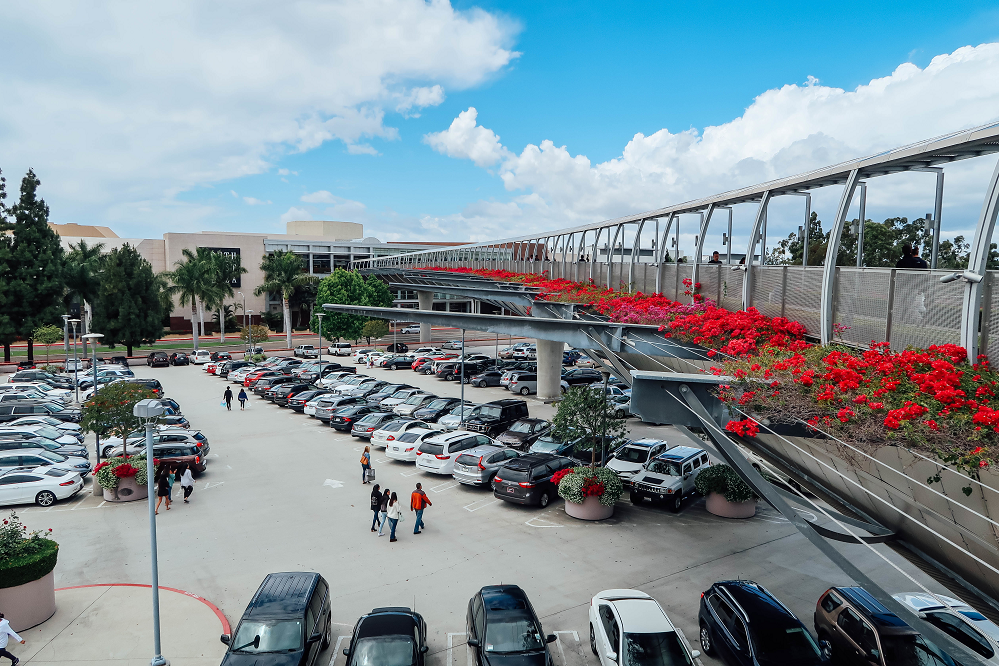
Published on February 24, 2021 by: Adrian
Under:
ArticlesNews

1980s mall culture is cinematic. It’s all your friends in the food court, and packed record stores. It’s John Bender with his fist raised to Don’t You Forget About Me. But we did forget, or rather, we got the net – and in person commerce culture fell to online shopping. Digital killed the reality store.
It’s been happening for years. Big box stores and indoor malls have been ghosted by the convenience of modern technology. Once you put something out on the internet, it’s there forever. In physical reality, most of these mammoth commercial spaces have yet to be “deleted” or repurposed.
So, what can you do with them? And who do you market to?
Owners of oversized properties, both indoor and outdoor, have gotten creative over the years to optimize their operations. Strip malls became artist centers with independent coffee shops and artisan tacos, convenience stores became banks, banks became chiropractic offices, and the market progressed, playing by the rules of trendy musical chairs.
2020 halted development unquestionably and the problem with of-the-moment businesses is that the majority of them didn’t have the financial backing to survive an extended suspension of consumer activity.
There is always opportunity to be had. While retail was sentenced to an undesired siesta, utilitarian companies and federal resources stepped in to claim space in a big way.
There are not many entities with the wherewithal to afford and utilize 100% of the square footage of large scale properties on their own, but all of them from medical, to politics become potential tenants whenever circumstance demands mass assembly.
From Football fields, to concert venues, to warehouses, space becomes valuable down to the inch when assembling large numbers of people is a prime directive. Beyond the temporary, tented landscape of the 15 yard line, medical laboratories, hospital extensions, urgent care facilities, and government outposts all need commercial space. Though these needs are usually temporary, some of these pop-up services could become lasting clients.
Boutiques may be out but if we’ve learned anything from 2020 it’s that we need to expand our hospitals, clinics, and supporting medical facilities. From large-scale healthcare to private practices and even assisted living, we can expect to see the health sector make up a large part of the future commercial renter’s pool, and big box stores and malls have the researched advantage of accessibility across communities and demographics.
About a third of American malls will permanently close in 2021. We know there’s a demand for more medical real estate but there are roughly 1,000 malls in operation who’s future outlook seems dim, not to mention stand alone big box stores like Macy’s.
There are a couple of tactics in play.
The first is to repurpose the spaces entirely – a lot of them could potentially go to ‘micro warehouses’ that stock products for online vendors, and shipping fulfillment centers to support the record-breaking online consumerism that we are experiencing now. Other potential tenants could include charter schools.
The second tactic is to mix up the tenant structure of indoor malls to include residential as well as retail. In 2018 there was success turning these large spaces into housing structures for the homeless, but now we see more luxury opportunities on the horizon with examples like the Alderwood Mall project where living, shopping, and fine dining are combined in a courtyard real-estate concept.
Flex spaces and co-working were trending heavily before lockdowns as the entrepreneurial co-op work culture continued to catch fire. Recent studies suggest that these trends are not dead, but merely suspended and will resume as soon as conditions allow; especially as unconventional compromises to 9-5 office atmospheres increase in popularity to balance 100% remote work models.
When we list out some of the above examples, we get an eclectic and eccentric list of development opportunities with seemingly little cohesion:
It’s hard to miss the irony that the spirit of the American Mall is unkillable. What was originally designed to be an amalgamation of stores and conveniences, is now becoming a collection of businesses to suit our modern convenience requirements. It just goes to show you that CRE opportunities are need-based and therefore highly sustainable, and that we may be back to the days of seeing all our friends at the food court again sooner than we think.
Navigating the challenges of Commercial Real Estate can be tricky. Reach out to us today for a demo and see how our collection of services can give your CRE asset management the necessary competitive edge.